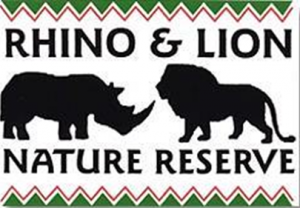News
Latest Lion Aid News
Let's have some comparisons of lion and rhino numbers, and then you decide....
Monday 22nd August 2011
|
At the recent interim CITES meeting before the Conference of Parties in Thailand in 2013 (I know, don’t even go there, Thailand is a prime mover and shaker in the illegal wildlife trade), it was decided that CITES would now take action on the illegal rhino horn trade. Yes indeed, the delegates became steely eyed in their determination. It was decided to do two things:
There truly is a rampant poaching campaign going on in South Africa – last year 333 rhinos were poached, and this year we are already up to over 250 and rising. Poor rhinos, left dead and dying with their horns chopped off, and a lot of evidence that syndicates are using helicopters, hunters, trackers, and even veterinarians. Recently two Asian nationals were given prison sentences (subject to appeal) for eight and ten years for attempting to smuggle rhino horns in their suitcases out through Johannesburg airport. Tip of the iceberg. South Africa, meanwhile, allowed 886 rhino “trophies” – horns that is - to be exported legally to places like Vietnam from 2006 to 2009. A recent Carte Blanche investigative television programme in South Africa revealed that Thai prostitutes (really, it is true…) were issued permits by the provincial authorities and by CITES to ”hunt” rhinos and export the horns to Thailand. The women had probably never held a gun in their lives, so a professional hunter was employed to shoot the rhinos. The women were put forward as “legal” applicants for a “legal” hunting permit for a “legal” export. A hunting licence and fee for a rhino these days costs so much less than what the horns are worth - it is akin to printing money. So let’s leave rhinos now, but remember two things, and get out your calculators. 886 rhino trophies legally exported in four years up to 2009. 583 rhinos poached in 2010 and 2011. CITES is always far behind in publishing their trade numbers, so we have no idea yet how many “legal” rhinos have been shot in 2010 and 2011 to date. I would imagine it would be quite equivalent to the poaching figures, and that the “legal” rhinos have been providing a conduit for the illegal horns, signed and stamped by CITES, to be exported from the country. A loophole the size of….well, a rhino. The second thing to remember is that South Africa has prided itself greatly in rhino conservation. Estimates are that there are about 21,000 of them in the country in protected areas, private conservancies, and game ranches. Twenty one thousand rhinos. Now how many lions does South Africa have? At a big stretch, maybe 2500 wild ones, 300-500 in private conservancies and “Lion Parks”, and probably well over 4000 (yes, four thousand) in captive breeding progammes for canned hunting. I told you 886 rhino trophies legally exported 2006-2009. Guess how many lions? OK, I’ll tell you. 2006-2009, 978 “wild” and 2150 captive bred/ranched lions legally exported from SA according to CITES. That makes a grand total of 3128 lion trophies over four years. So 3.5 times more lions exported from that one country than rhinos, in which there are three times more rhinos than lions? Sit back and consider that for a minute. Supposedly a source population of about 7000 lions of all ages, wild and captive bred, provides 3128 adult lion trophies for export over the time period of 2006-2009? The more surpising since about 2000 of those lions live in Kruger National Park, a supposed protected area? The numbers don’t add up do they? Is this lion poaching in the surrounding countries with skins being laundered for legal export in South Africa? What we need now is steely-eyed CITES resolve to have a look at the lion numbers. We have had some success in achieving this, but need to go much further. The numbers do not add up to conservation, and while we agree that rhino poaching is reprehensible and must be stopped, CITES must explore many grey areas in South Africa’s “legal” export numbers for other species as well. Commerce, legal or illegal, is after all a contract between consumers and providers. The South African agencies right up to the Minister of Environment need to be held accountable for the lax attitude to the rapid escalation in rhino “poaching” over the past years. We would say the numbers of lion trophies exported from South Africa also need some careful examination. I will have more to say in a few days about CITES and lions, but will leave you with this for now… Picture credit – Rhino and Lion Nature Reserve, South Africa Tags: lions, CITES, South Africa, rhinos, Categories: Population declines |
Posted by Pieter Kat at 13:36
No comments have been posted yet.
Add a new comment
Existing user
New user sign up




